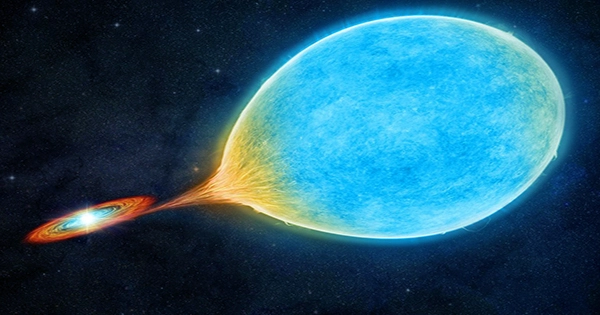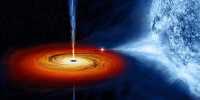The majority of stars in the cosmos are found in pairs, occasionally after the most massive star has gone through its whole life cycle and become a white dwarf. The tremendous gravitational field of the dwarf attracts the outer layers of the main sequence star to it, driving the two to orbit ever closer. This evolution alters the dance between the two, at least if they were somewhat near, to begin with.
When this process transfers enough material, the pair transforms into a catastrophic variable (CV). The term refers to the fleeting bursts of light that these stars produce when enough hydrogen is pulled onto the white dwarf to trigger nuclear fusion, not an imminent Armageddon.
The astronomers who initially noticed these phenomena didn’t know what caused them, but they came to the conclusion that a huge force must be at work. The bulk of novae, stars that suddenly grow brilliant enough to be seen, belong to this category of object.
The orbital period of the recently discovered ZTF J1813+4251 system, which was announced in Nature, is barely 51 minutes, making it the quickest time ever recorded for this particular combination of star types to orbit one another. Astronomers would be interested in ZTF J1813+4251 for that reason alone, but it is also significant because the pair eclipse one another as seen from Earth, allowing observers to measure their characteristics in unusual detail.
The shift should happen as the two CVs get closer to one another when the white dwarf has accreted, or captured, all of the hydrogen from its partner and is now drawing helium.
Astronomers have found helium-accreting CVs and believe they originated from more traditional CVs, but this theory has not been validated because the process would have taken place tens or hundreds of millions of years ago.
In a statement, Dr. Kevin Burdge of MIT remarked, “This is a rare example where we captured one of these systems in the act of flipping from hydrogen to helium accretion. It was long contested whether these objects’ orbits might get so brief as to produce detectable gravitational waves, but people expected they would eventually convert to ultrashort orbits. This finding disproves that.
By examining sky surveys involving more than 1.2 billion stars and hunting for stars that brightened and dimmed on very short timescales, Burdge and co-authors discovered ZTF J1813+4251. Brightening results from the eclipsing process, in which one star blocks out the light of the other, rather than from fusion outbursts on the white dwarf, which are considerably rarer and less frequent.
Burdge and his co-authors were able to use two of the largest telescopes in the world to observe the light cycle in detail since they were sure that only a binary pair and most likely a CV would exhibit such a cycle. They came to the conclusion that the system is about 3,000 light-years away and that it is seen clearly enough for us to determine the mass and radius of each component.
The white dwarf is much smaller than the Sun while having roughly half the Sun’s mass due to the nature of such burnt-out stars. Its partner is similar in size to Jupiter and has a mass of 0.12 solar masses.
Burdge claimed that an orbit of fewer than eight hours would be impossible for a sun-like star that was still primarily composed of hydrogen. However, the star in ZTF J1813+4251 has been reduced virtually to its helium core, whose higher density allows for shorter orbits, having lost most of its hydrogen to the white dwarf.
When completely helium-accreting, the authors predict ZTF J1813+4251 will have an orbit of just 18 minutes and will exist 75 million years in the future. Surprisingly, the stars will then gently drift apart and the donor star will cool instead of colliding.
Within a decade, scientists anticipate being able to detect the orbital shortening and gravitational waves arriving from the system using new detectors. Astronomers will then be able to test Einstein’s predictions on the slowing caused by a gravitational wave of a specific size.
There are more than 1,000 known CVs, but only 12 of them have orbits that are under 75 minutes long. As a result, ZTF J1813+4251 is not just a record-breaker but also a rare object because there aren’t many nearby equivalents that could be employed for the same kinds of observations.
This is a unique system, Burdge declared. “We got doubly lucky to find a system that addresses a huge open question, and is one of the most exquisitely behaving catastrophic variables known,” says the researcher.















